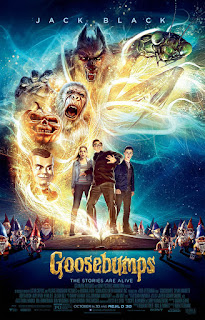Nimona by ND Stevenson
I haven't done one of these in a while but I finally watched Nimona this weekend and we have to talk about it. Because here's the thing: I love Nimona. I read it as a webcomic. When it was released as a print book I badgered my manager until she promised me we would buy a copy for the library. And when it was first announced that there was going to be a movie I was immediately ecstatic, immediately followed by apprehensive. I love the book so much that I was terrified that the movie would ruin it. That's why it took me four months to actually watch the thing.
Let's start by admitting that the movie makes some big changes. I could make a post much longer than this one pointing out all of the differences in characters, plot elements, even messaging between the book and the movie. But that's not why I wanted to talk about it today. I will very quickly say that I still like the book better. I think the humor is sharper and Ballister is a stronger character in the original form. There is one thing the movie does better, though: it asks better questions. When you read the book you can tell it started life as a web comic. It meanders around, making nonsense jokes and cackling at its own cleverness before it finds focus and tells a coherent story. The movie cuts all of that extraneous information (no matter how much I love it) and focuses the conflict. Most importantly instead of just being about a corrupt system it asks two important questions: once you've been judged is it possible to change perceptions; and why does society vilify things just for being different. The central emotion, then, isn't righteous indignation but weary desperation which lends the movie a maturity that the book lacks, even as it has been modified to be appropriate for a younger audience. It makes this a rare case where both forms are worth consuming though for entirely different reasons.








































